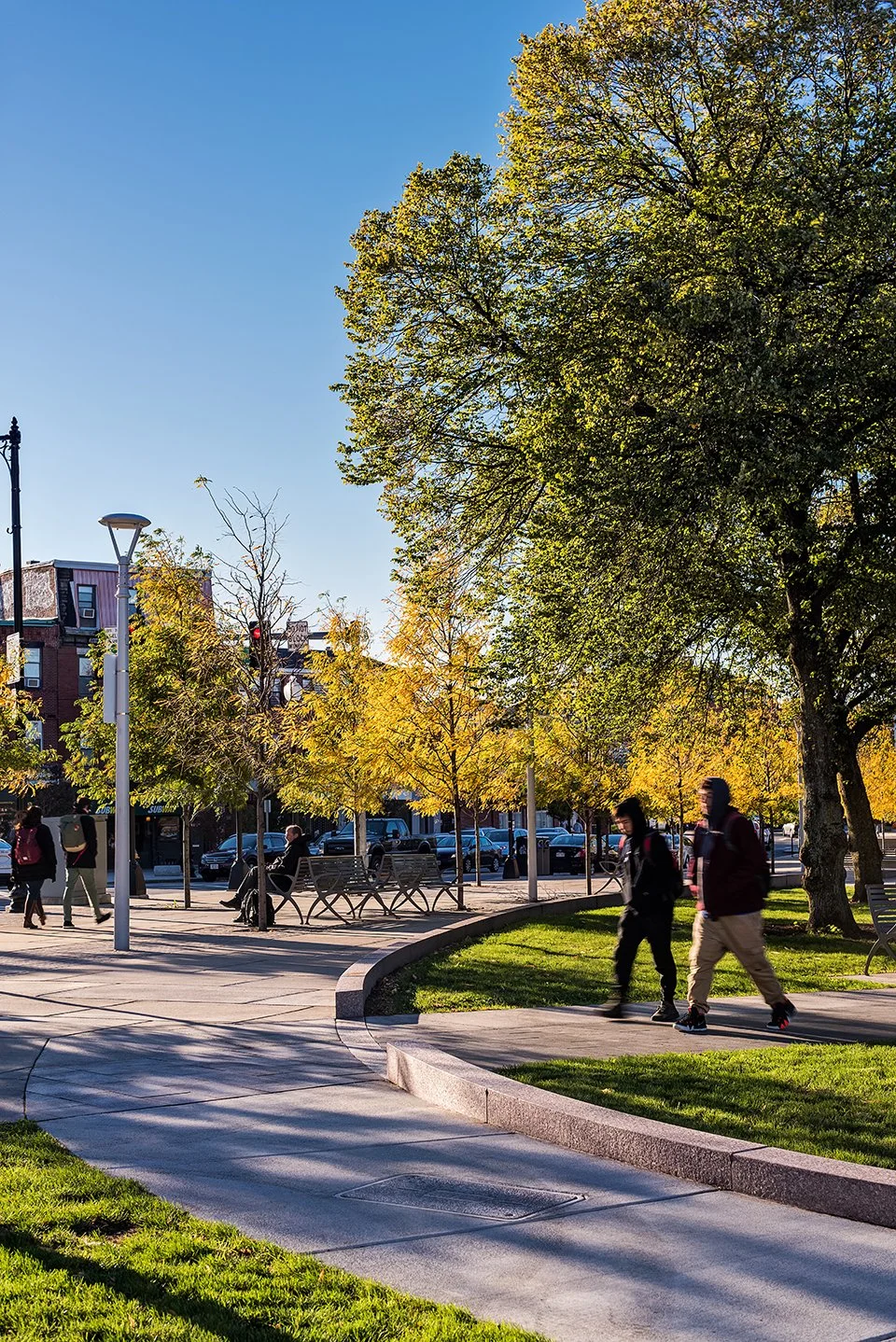Small Sites + Big Impact: Building a Network of Climate Action
by Jennifer Ng
This article first appeared in Issue 13 of Fieldbook from Boston Society of Landscape Architects
With the focus on climate change and the role landscape architects can have in resiliency planning, there has been a galvanizing energy on large-scale resiliency plans that span the neighborhood, district, and city-scale. Small sites are largely untracked and under-represented in the climate change conversation. But change happens at the site-scale: incremental changes that collectively have a big and measurable impact.
Issues such as urban heat island, carbon footprint, stormwater management, watershed management, and biodiversity are all addressed at the site scale. The spider web of our projects is vast.
Small sites also help with resiliency fluency. A big challenge is getting buy-in from clients who may not always prioritize resilience. These clients span all project types: government agencies that have interest but maybe don’t have the tools for long-term maintenance or need help coordinating across agencies; developers who are interested in the story but need to hit a bottom line; and residential homeowners who don’t see the contribution their home can have for the greater system. Building a personal connection to the issues and to the solutions starts locally: our schools, our favorite street, our favorite outdoor space, our home.
Resiliency must start with the site scale and can be achieved regardless of our seat at the table. We all have a part to play in our shared resilient future. Small steps lead to big impact. The transformation can be empowering and breathtaking.
At Central Square in East Boston, the original Olmsted Brothers’ design (pictured left) included an elliptical, fenced park within a commercial square. Over the past century, it had become an inaccessible traffic island surrounded by vast swaths of pavement. In 2010, the Boston Transportation Department called for a renovation.
The public space was substantially expanded by reducing lane widths and simplifying vehicular circulation (pictured right). The original ellipse was reinterpreted as a low granite seat wall supporting impromptu informal play and gathering. The historic urban tree canopy was restored and supplemented with 97 new trees to help address urban heat island issues (East Boston is the neighborhood with the least tree cover in the city). The Central Square project became a Boston Water and Sewer pilot site to test green infrastructure and stormwater infiltration, including directly feeding planted areas. The site was designed to store 95,000 gallons of stormwater, minimizing the overflow to Boston Harbor. And perhaps most importantly, it is now a safe, vibrant, accessible neighborhood place with yearlong activity.
Jennifer Ng, ASLA, is a Senior Associate at Klopfer Martin Design Group with a passion for community-driven design. The consistent theme in her projects is to create a sense of home. Through her practice, stewardship of the environment and culture become an everyday, every project opportunity.



